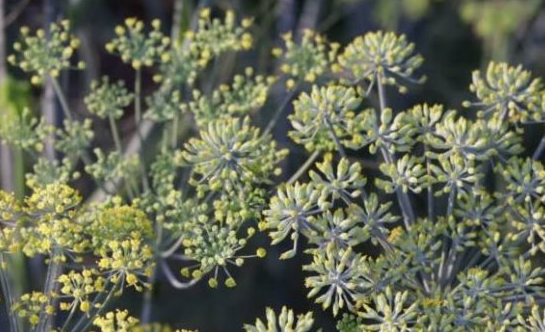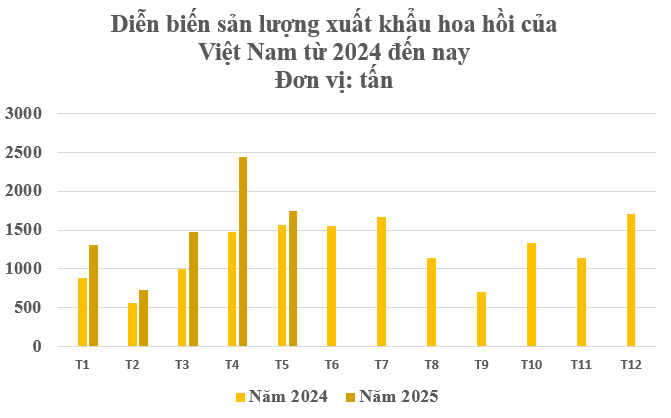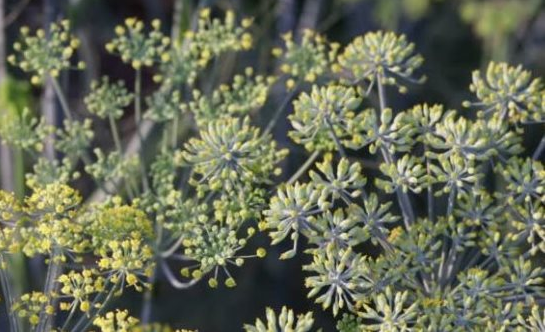
Illustrative Image
According to preliminary statistics from the Vietnam Pepper Association (VPSA), in May 2025, Vietnam exported 1,751 tons of fennel, earning a turnover of US$7.0 million. The export volume decreased by 28.1% compared to April. India was the largest importer of Vietnamese fennel, accounting for 75.1% of the market share with 1,315 tons.
Accumulated in the first five months of 2025, Vietnam exported 7,682 tons of fennel, with a total export turnover of US$28.9 million. Compared to the same period in 2024, the export volume increased by 49.0%, and the turnover increased by 12.7%. The leading exporting enterprises included Prosi Thang Long and Lam Son.

According to the Vietnam Academy of Forest Sciences, fennel is a small to medium-sized tree, growing to a height of 2-6 meters, with a slender, oval-shaped trunk, and thriving all year round. Each year, the tree can only be harvested twice, making fennel a rare and valuable spice.
In reality, Vietnam and China are the only two countries capable of producing fennel in large quantities due to favorable conditions. According to statistics, Vietnam is the second-largest producer of fennel in the world, after China, with an estimated annual output of 22,000 tons cultivated on approximately 55,000 hectares of land.
Vietnam has two main harvest seasons: in June (the “tu quy” variety) and August-September (the “hoi mua” variety). This implies that the supply of fennel will be more abundant in the second half of the year, which is an opportune time for exports to surge, especially with the increased demand during the year-end holiday season in Asian and European markets.
Fennel has a high content of essential oil (mainly anethole) and is widely used in the food industry (as a spice, in candies, and baked goods), pharmaceuticals (for anti-inflammatory and digestive purposes), and cosmetics. The essential oil derived from fennel commands a much higher price than raw fennel, presenting a significant opportunity to develop a deeper value chain.
In the global market, particularly in Europe, Japan, and the US, there is a growing preference for natural, organic, and safe products. By processing fennel into essential oils, fennel powder, extracts, and natural concentrates, we can cater to these demands effectively.
Presently, in provinces with large material areas, such as Lang Son, Cao Bang, and Bac Kan, a number of enterprises have invested in building fennel essential oil processing facilities, including:
Prosi Thang Long Company: One of the largest exporters and processors of fennel today. Lam Son Company (Lang Son): Focuses on processing and exporting fennel essential oil to European and Indian markets.
However, the number of processing plants is still limited, mostly small and medium-sized, and insufficient to meet the processing demands of the entire material region (estimated at nearly 55,000 hectares). Investing in modern extraction technology and adhering to standards such as GMP and HACCP is imperative if Vietnam aims to transition from exporting raw materials to refined products.



![[Photo Essay]: Experts, Managers, and Businesses Unite to Forge a Path Towards Sustainable Green Industry](https://xe.today/wp-content/uploads/2025/07/z678592918-218x150.jpg)












